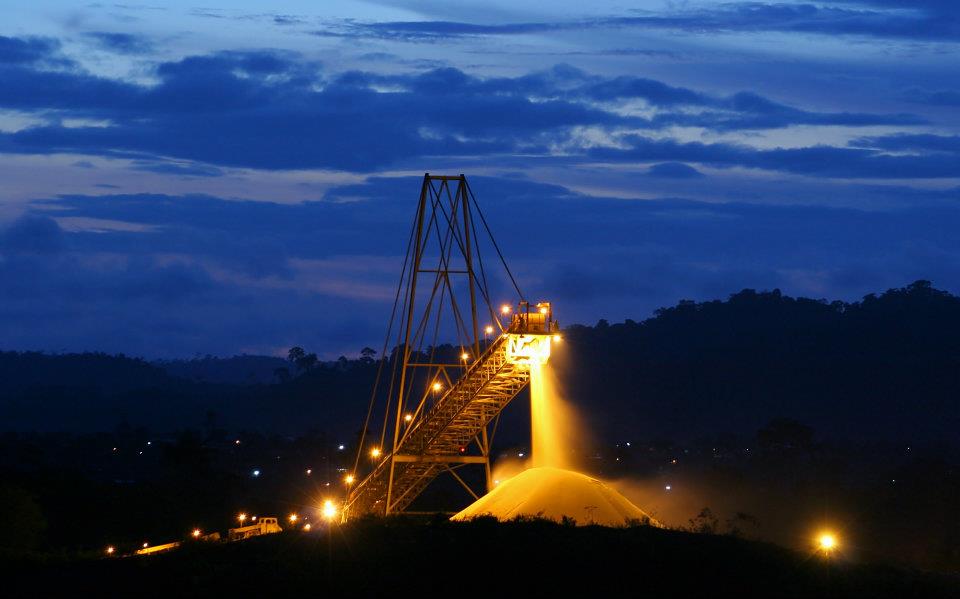Women in Mining: The need for qualitative diversity

A recent report by Rio Tinto admitting bullying, sexual assault and racism in workplace, brought the “hostile to women” and “boys club” keywords back to industry discussions, just as the industry seemed to be progressing on setting diversity and inclusion targets. The report is a shocking compilation of evidence of harassment and abuse and quite a blow on the industry that has been struggling to get rid of the labels.
The issue is multi-dimensional, though and goes beyond addressing labels. The dimension of lack of safety and comfort that women still face in the male-dominated industry and that of the opportunities the industry misses as a result of lack of or insufficient diversity.
Upcoming event: Edumine Shift: Women In Mining – Exploring Points of Resistance
Research after research has been coming to prove that companies that embrace gender and broader diversity perform better on almost all realms. And multiple studies continue to show disturbing evidence that the industry struggles to attract women. Mining is behind almost all other industries, including oil and gas, in gender parity. According to a McKinsey research, the drop-off from entry level to executive for females in mining is among the most dramatic across all industries. The study highlights three factors driving women out of mining: the work ceases to be interesting, cultures are non-inclusive, and there is a perceived lack of advancement.
And this is despite all the diversification efforts the industry seems to be diligently performing.
Gillian Davidson, a BOD member at International Women in Mining and an Independent Director at a number of mining companies, suggests that companies need to go an extra mile: “If companies have a strong commitment to get more women especially in managerial positions, then they need to consciously and intentionally create a working environment that attracts women – promote work-life balance, design workplaces fit for women. Creating a culture of inclusivity and respect, from diggers to CEOs, is absolutely critical.”
Luc Zandvliet, a leading industry Social Performance expert, believes that setting targets and changing recruitment and retention patterns is essential for the change the industry is apparently struggling to achieve. “I would put my effort into policy and targets and make them public. That should provide space for others within the organization to be more pro-active in challenging the status quo”. “Policy change across company functions is essential. Issues like- how to recruit, what questions to ask, flexibility on work hours, home emergencies, as well as procurement policies. You look at everything. You review your operational policies and practices through a gender lens, much like you do on integration of human rights issues, for example.”
While the data promises benefits from embracing diversity, turning quantitative targets into qualitative inclusion may be a challenge.
John Harker, a former chief negotiator in a number of mining and extractive related conflicts in places such as Sudan and Colombia warns against a tick a box exercise approach: “This whole fascination nowadays with ESG seems to me to offer an opportunity. However, we should also be conscious that hiring women must not be seen as a tick a box exercise to comply with those ESG requirements. In a way, that can be a retrograde step that will not help in ensuring that women are not being sidelined from positions of power.”
A seat at the table. A gender or a role issue?
Interestingly, data suggests that women are especially underrepresented in the C-suite in the industry. While women only fill about 12.9% of the C-suite positions in Europe and 11.5% of the C-suite roles in the U.S. and Canada, they are more likely to have better representation in executive roles more broadly and on company boards, according to the analyses of S&P Global Market Intelligence.
This observation may be suggesting that the C-Suite, which is responsible for strategic decision making appears to be the most un-diverse link in the overall still largely male dominated chain. And do women in executive roles where they are slightly better represented in the industry, get a seat and a say at the table when it comes to strategic decision making?
The issue of a seat at the table and meaningful contributions to the decision-making may not always be solely a gender issue, but rather an issue of the role, the mandate that the role carries, and the discipline, Luc Zandvliet believes. “I don’t think that gender is the only reason why some women may feel their ideas are less acknowledged within an organization. Some disciplines in an organization simply have less cloud than others. Social Performance is a classic one. We’re all struggling to be heard, whether we are female or male. In some organizations, that would make it double challenging for women.”
Liz Wall, a non- executive Director and an experienced social performance expert in the industry too believes that “The diversity represented in a board room is often related more to the roles of individuals represented on the board, rather the gender of the individuals. Gender representation across C-suite roles varies in the mining industry, which in turn influences the gender composition of the board”.
The issue of role rather than gender as a possible reason for limited participation in the decision making process seems to be quite visible. While pressing ESG issues have been increasingly more often determining the fate of mining operations in recent decades, the cohort of professionals in the executive boardrooms hasn’t changed nearly as dynamically in most cases. For both objective and subjective reasons.
‘Soft’ side professionals and the experience Issue.
Liz Wall believes that the industry is striving to have more women, with companies putting in place a variety of initiatives to increase diversity (beyond just gender diversity) ranging from quotas, mentoring, preferential hiring, networking etc. But there is of course both a supply and a demand side to this equation. Demand has certainly increased, as has supply, but not always at the same rate. For an industry in which “years of experience” was long afforded a significant weight in hiring decisions, there has been a need to evolve to better open the door for more diverse experience backgrounds and expertise.
Mining is a technically challenging industry and running or building a mine does require a specific set of skills and experience. But mining is also one of the most complex industries in terms of ESG risks. This may suggest that even if the management team has an extensive experience and relevant degrees, without the diversity of disciplines in the decision making room, technical capacity and experience in building mines may not always get the team to actually build one. Multiple studies indicate that it is the ESG risks, not the technical skills that become a hurdle in getting a project into production stage. The sample of 308 undeveloped copper deposits indicates that 96% of projected future supply present multiple forms of concurrent ESG risk that are mainly price insensitive. Better copper prices, for example, won’t guarantee a project success, because ESG issues may be the real hurdle.
The industry itself, according to KPMG’s annual survey, consistently identifies community relations, political instability and permitting among the top risks the industry faces. This may be interpreted as a challenge for companies with less diversity in the senior management and C-suit.
John Harker reflects on the “experience pride” in the industry. “I have often had to at least imply, if not say directly- ‘you have 30 years of experience, so you may have been making the same mistakes over those 30 years’. Having diverse opinions at the table could identify something that no one has ever thought of, and that could be a way forward. You need this mix of perspectives.”
Nellie Mutemeri, an Independent Industry Consultant and Associate Professor, says, women are often pushed into the “soft” side of the industry and the soft side has less say. “At a mine operation, traditionally a mining engineer, or processing manager or sometimes a geologist are the professionals whose opinions are taken into account, or rated higher. So if you represent the “soft” areas, the specific chauvinism of industry is such that your opinion may be ignored. And at the same time it’s a hostile environment to exist in the technical side, so you are pushed into the “softer” side. And when you get there, you are now a woman on the “soft” side, not the “more important” technical side. So it’s a double, triple challenge.”
How does the industry face the challenge?
Luc Zandvliet believes that attracting diversity and talent needs to start from changing the procedures and acknowledging the need for a tailored approach. “For the companies to take advantage of experiences in other areas or expertise they need to elevate their recruitment policies, say that they want people with different backgrounds that bring a different experience to company – that would be a fairly straightforward thing to do. You put in your job description that you want people with these kind of experiences.”
The Osler Diversity report suggests that some women in the industry do enter the field in senior roles from other professions such as accounting, law or finance. However, this tends to be more common among the mid-size and larger firms, while juniors by comparison, are skewed more heavily to a tighter circle of geologists and mining engineers — fields where women are under-represented.
A recent Harvard Business Review study reflects upon company transformations, suggesting that only 22% of the companies studied successfully transformed themselves. The study identifies 6 most common attributes of the companies that have undergone the most successful transformation. Three of those attributes deal with employee satisfaction, and three relate to diversity and inclusivity, including the number of women employees and that of women managers.
Mining is an industry built on transformation phases. From exploration to construction and operation, a project undergoes significant changes. And while a large mining corporation itself may not be transforming frequently, its operations all over the world are undergoing several transformational stages. So are junior companies themselves. And apparently juniors usually lack important diversity related preconditions for successful transformation. Could this be at least one of the many reasons why so many undeveloped mining projects are stuck in or challenged with political and social issues?
What can be done?
The experience of the team is essential in securing a flawless operation, but the complex sustainability, social, political challenges the industry faces can only be addressed efficiently if there is a qualitative diversity in day to-day decision making. While women often represent the ‘soft’ side of the industry, they may be left out of the corporate boardrooms, or their set of priorities may be overlooked by the majority in the room. The Industry will need to make space for a real equity of thought in decision making- be it gender or discipline equity.
The authors of this article have worked for several years on the ‘soft’ side in a challenged project. While there may be a multitude of subjective political issues around most such projects in the industry, there are also things any company can do on ensuring diversity of thought to prevent or be better prepared for these challenges. Here are some suggestions.
- Make sure you have gender, experience and background diversity in the management teams. Make sure the reports you get from site are not filtered by people of the same age, gender and professional background. In fact, don’t wait for reports to come to your corporate office. Reach out to diverse groups of people on site.
- Do not underestimate local capacity. Your mine manager may have 30 years of mining experience. But will you necessarily benefit from ranking their opinion on a political or social issue in the host country higher than that of a local ‘soft side’ manager with no mining degree but with knowledge of the realities on the ground?
- Open the door of Executive Committee and BOD meetings for a wider range of team members, let some fresh air and thinking in. Research continuously proves that engaging the larger team in decision making processes and ensuring diversity around the table almost always guarantees better results.
- Look for talent, not just experience and training. The industry is still rough and unattractive for women. By missing out on women the industry misses out on at least half of the available talent in the market. You want to get ahead by attracting and keeping the best. Put extra effort into it. From hiring practices to promotion criteria and daily corporate culture- everything needs to go through that lens. And it needs leadership beyond setting targets.
Anna Saghabalyan served as Director of Communications at “Lydian International”, a junior company with a flagship gold project in Armenia from 2012-2020. Prior to that she has worked as the Director of Communications in one of the leading NGOs in Armenia the Civilitas Foundation. She has been a senior correspondent on foreign policy and economy for Radio Free Europe/Radio Liberty. She holds an MSc degree in Corporate Communications from Rotterdam School of Management (RSM). Her Master’s Thesis on NGOs impact on mining in post-communist countries has won the “Shell Netherlands Award for Excellence in Corporate Communications” in 2014. Currently she holds advisory and consulting roles on communications and ESG related matters in private and public sectors, including consultancy in a current World Bank financed project on developing a comprehensive mining strategy for Armenia, executed by Grand Thornton.
Nara Ghazaryan served as Director of Social performance at “Lydian International”, with a flagship gold project in Armenia for period 2011-2020, managing CSR and social performance. Before that she worked as an independent consultant in Afghanistan to evaluate multi-million dollar program. As part of her previous experience, she worked as a Social sector advisor for USAID, focused on Armenia and a military conflict area Nagorno-Karabakh. Nara has an MS degree in management in public administration from New York University. Nara is currently a freelance consultant in areas of land acquisition, social impact assessment and stakeholder engagement in private sector.
More News
{{ commodity.name }}
{{ post.title }}
{{ post.date }}



Comments